Robert Wickens Is Just Getting Started. Again.
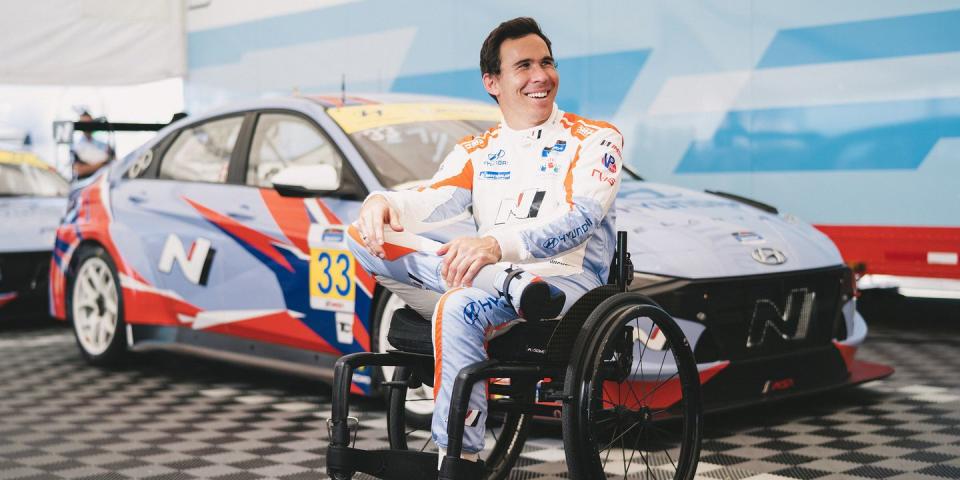
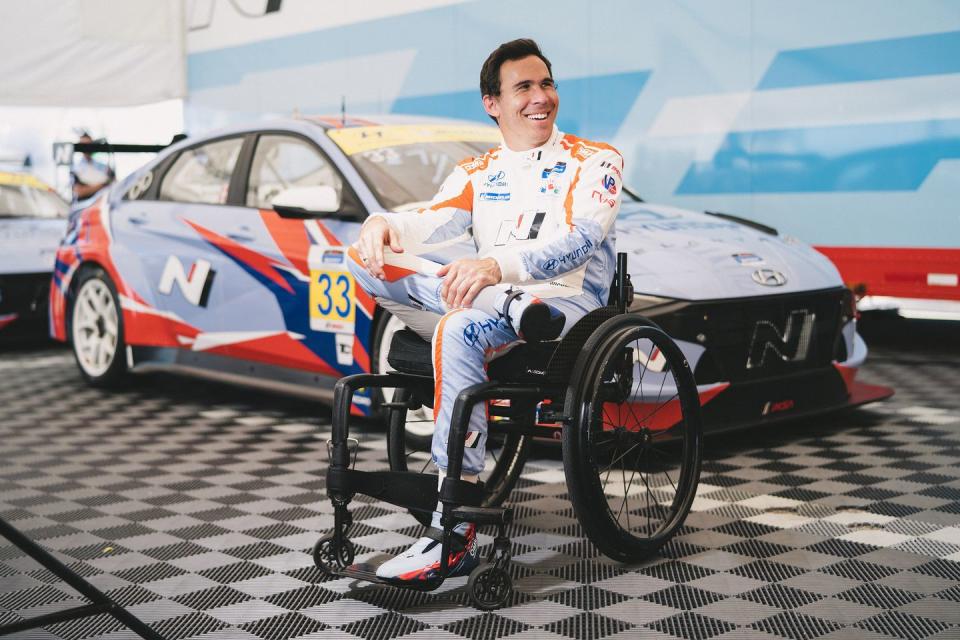
SEBRING, FLA. — Robert Wickens wasn't happy qualifying second. He knew he could've gotten pole, but he's still figuring out how hard he can push in the new-to-him Hyundai Elantra N TCR, and complications from the chip shortage mean the team is waiting on a display that shows predictive lap times. These aren't race-car-driver excuses, just reality. Sitting in his RV, quiet and air-conditioned, Wickens isn't dwelling on P2, but he doesn't want to accept any congratulations either. He's not mad; he wants more.
This is not unusual behavior for a professional racer. Their job, after all, is to win. They spend their lives aiming for the top. Robert Wickens, 33, is not a typical racer, though. This is his second race after a 2018 IndyCar Pocono crash caused a T4 spinal cord injury and left him with paraplegia. In the years since, he's regained limited use of his legs and now races for Bryan Herta Autosport in the IMSA Michelin Pilot Challenge series. Wickens hopes that this is the first step on a path to racing in a top-tier series, where he can challenge for a title.
"My big thing is, 'What do I do after this?'" he says. "I don't know how to word it where I'm very appreciative [for this opportunity] . . . but I feel like at the moment, for my own closure of my career, and my life, I need to return to that elite level of motorsport."
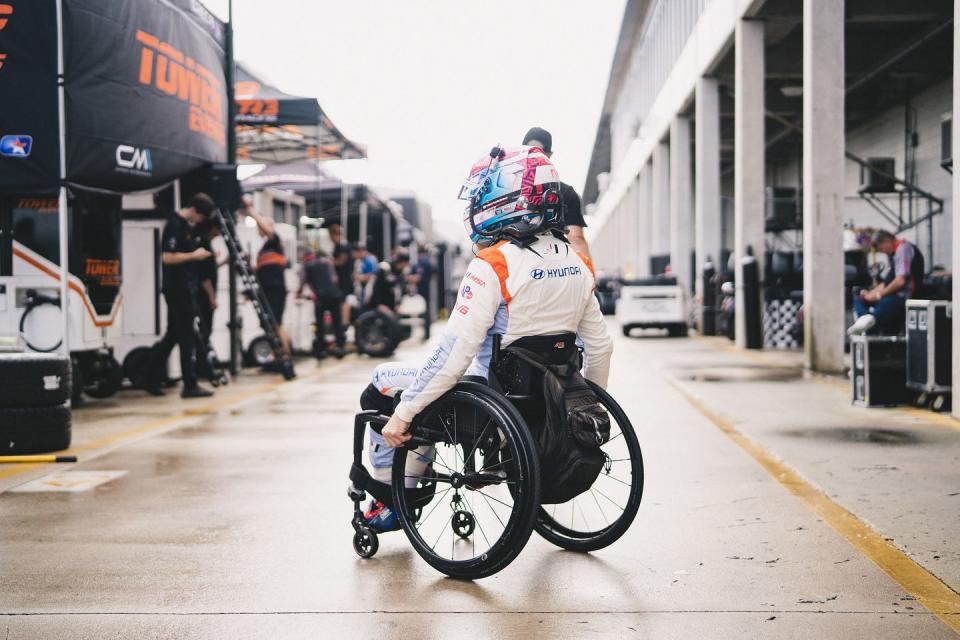
In person, Wickens is soft-spoken, but his arrival in the U.S. wasn't quiet. He put his car on pole at the 2018 IndyCar season opener in St. Petersburg, his first race in the series, and likely would've won were he not spun by an opportunistic Alexander Rossi making a dive into Turn 1 with two laps to go. Four podiums followed, plus rookie of the year honors at the Indy 500. That his racing career was put on pause during one of the greatest rookie seasons of any driver anywhere was particularly cruel.
This publication profiled Wickens in 2019, while he was still at a rehab facility, aiming to regain full use of his legs. He can now walk with the aid of a walker, but as far as racing goes, he's focused on hand controls. While anyone can buy a set of hand controls for a road car, you can't do the same for a race car. You need to develop them on your own, which is exactly what fellow racer Michael Johnson did after becoming paraplegic as a result of a teenage motocross accident. Johnson first developed hand controls for open-wheel cars in IndyCar feeder series, then for sports/touring cars. Johnson joined BHA last year and, with his hand controls, opened the door for Wickens, who uses Johnson’s system.
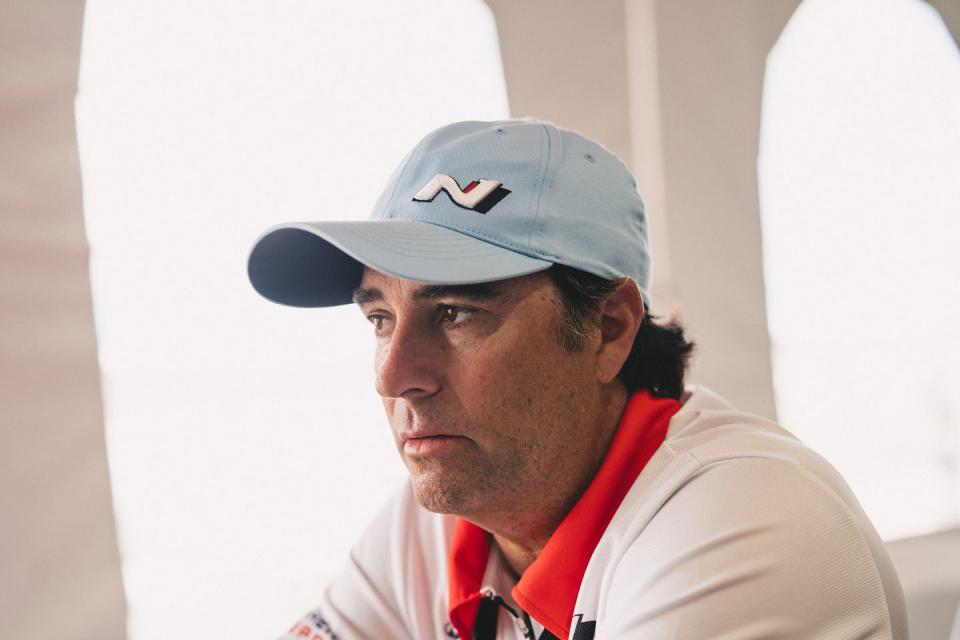
"It started at Daytona last year," says Herta, an IndyCar star turned team owner.
"We were there, and it was our first race with Michael Johnson, and we had just adapted one of our Velosters to use his hand-control system. We're sitting around talking, and Sean Jones, my business partner, brought up Robert Wickens, and, 'Hey, we should reach out to Robert and see if he's interested in trying the car out.'"
The test came together at a damp Mid-Ohio last summer. If you've ever driven Mid-Ohio in the rain, you know just how treacherous the place is, ready to spit you off into the grass in an instant, yet Wickens proved quickly he was still the racer he was before the crash. "He just showed that fire right away," says teammate Mark Wilkins.
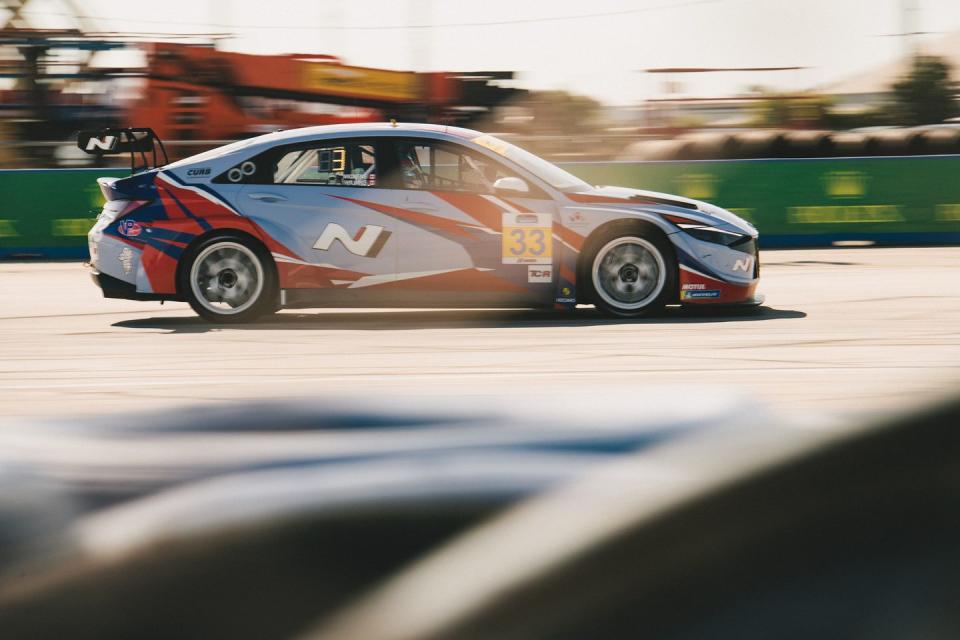
"I was competitive, fairly quickly," Wickens recalls. "It was a wet Mid-Ohio, but my lap times were respectable, everything was fine. And then from there we just kept casual conversations going on what could be possible and a return to racing. Then ultimately Hyundai put their faith in me to fund the program and where we are now."
Herta says Hyundai didn't need much convincing, and Wickens is valuable to the team far beyond the PR he brings. "He hasn't forgotten how to drive a race car fast," he says. "He's one of the elite drivers in the world."
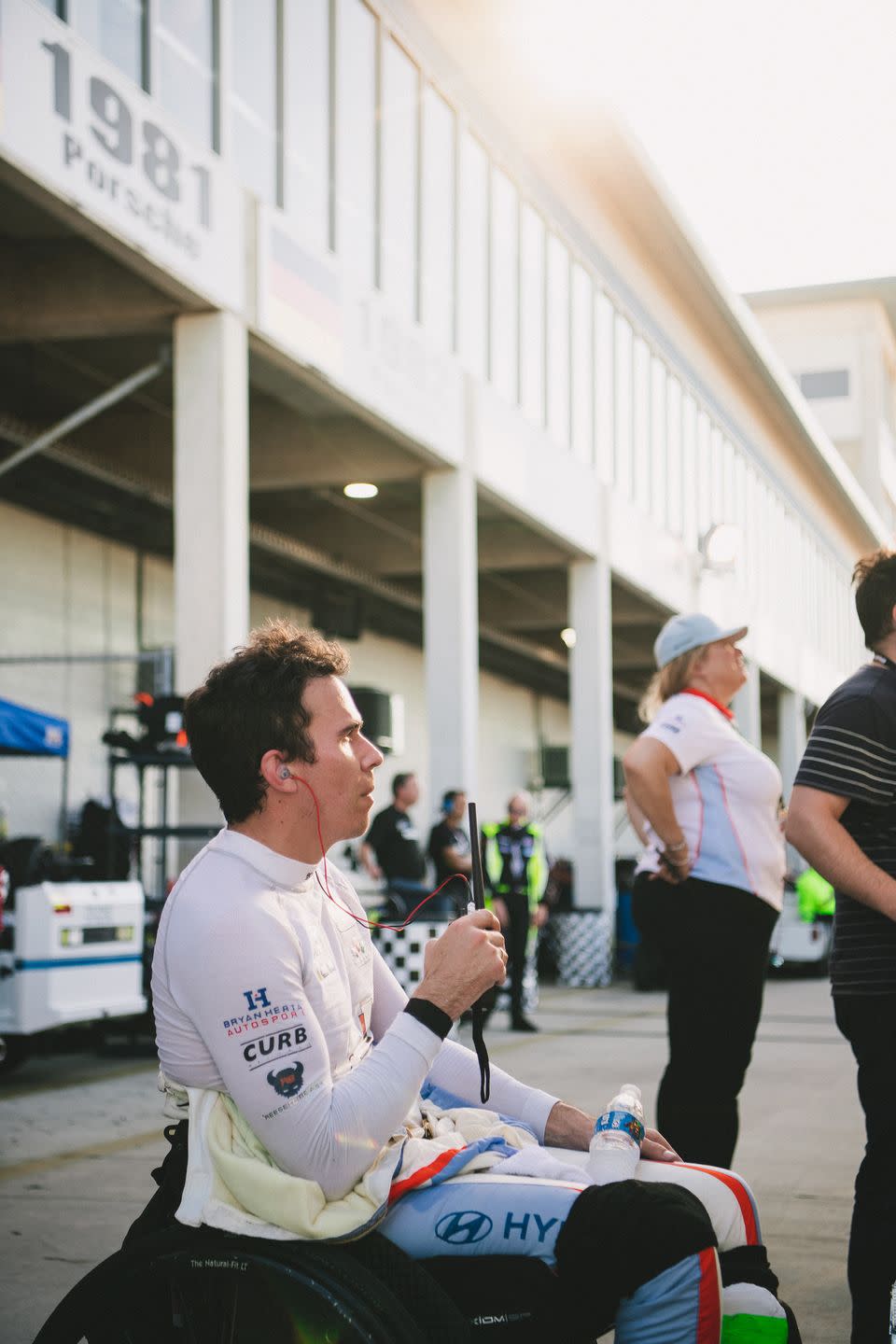
Looking at Wickens as an elite driver is key to understanding him. He's incredibly friendly, but there's a seriousness, a quiet intensity, that colors all his conversations. "He's very intense, he's an absolute perfectionist," says James Hinchcliffe, a former IndyCar star and Wickens’s lifelong friend. "He demands perfection from everybody around him, which I respect a lot and I think people in teams respect a lot. He's busting his ass as a driver to prepare himself and show up and do the job to the best of his ability, and he expects everybody around him to do the same."
Hinch and Wickens raced karts in Canada together as teenagers and kept in touch as their careers blossomed, James in the U.S., Robert in Europe. They eventually reunited as teammates in 2018 at Schmidt Peterson Motorsports (now Arrow McLaren Schmidt Peterson)."I think a lot of athletes when they get hurt, they hide," Hinchcliffe says. "They don't want people to see them in anything other than their peak-level performance. And Robbie took kind of a selfless approach in that whole situation." Wickens says he and wife Karli decided to document his recovery on social media, not because of any goodwill it might generate—though it did generate a lot—but because they couldn't find much out there on what it was like recovering from a T4 spinal cord injury.
"If someone in a similar situation to us wanted to know what some of the exercises looked like, we just wanted to shine some light on that," Wickens says. "And that was really the bottom line. And the ripple effect is I had no idea how much it would inspire people. I never thought I would inspire anyone. It never crossed my mind."
Spinal-cord injuries are brutal, and the recovery process is different patient to patient. For Wickens, there were hours spent working on building upper-body strength and hours on an anti-gravity treadmill and walking with the support of aids and a walker. If anything, he feels he pushed himself too hard during the early stages of his recovery, working six hours a day, six days a week for around 18 months. "The irony when COVID started, when everyone went into lockdown, I realized how overworked my body actually was," he says. "So the first two weeks of lockdown, when gyms were closed, I was the strongest I had ever been. And it's because my body actually recovered for a period of time." Naturally, without being able to go to the gym, he atrophied but has since gotten back to working out, though only four hours a day, five days a week.
Last year, once the possibility of going racing again became more real, the regimen changed. "When we first started working on his rehab, the objective was just to get him back to a normal life," says Jim Leo, founder of motorsports-focused gym PitFit. After a while, they realized that Wickens would likely not be able to walk as he did before the injury, and it was around this time he had his test with BHA. With the prospect of Wickens returning to pro racing, Leo created a modified version of his driver-training regimen, just focused on the waist up. "He got so much more fit, once he had this in his sights," Leo says. "His focus and passion changed from just a normal life to 'Oh, I want to be a race-car driver again.'"
Things are, of course, not simple. Wickens lacks the core strength that's so crucial to holding yourself up in a race car, and he needs the assistance of Leo to get in and out of the car. During pit-stop practice at Daytona, Wickens broke a rib while being pulled out of the car and had to do the preseason test and race weekend with a painful injury.
The hand controls have their own challenges, too—perhaps the biggest is braking. In an Indy car, a high-downforce machine with no hydraulic brake assist, it's just not possible to generate the force required with hands alone. Especially when those hands have to do everything else. Ideally, you need a by-wire braking system, wherein the brakes are activated electronically. IndyCar likely won't go to by-wire braking in the foreseeable future, and Wickens doesn't think the series would make an exception for him. "It wouldn't be an Indy car when we were done with it. I would need so many different alterations." So, he's shifted his focus toward cars already using by-wire braking—Formula E and top-class sports prototypes.
Braking is done by a ring on the back of the steering wheel that pushes a rod attached to the brake pedal. It's hard to feel exactly what the brakes are doing through the hands, and that makes tracks where light braking is required tricky. At least at Daytona, it didn't give Wickens the confidence to try and outbrake a competitor. Beyond hand controls, there was also the matter of getting used to a completely different car than Wickens had ever raced. The Hyundai Elantra N is arguably the class of the TCR grid, but it's his first front-wheel-drive race car, and it has far less downforce than the machinery he's used to.
"The good thing is I still remember how to drive quickly," Wickens says. "It's just trying to adapt that with hand controls is the challenge." Plus, he never lost the thing that's made him such a force for his entire career—his mental strength. By all accounts, he was an incredibly focused racer from the beginning—and he says this came in response to seeing his family put their all into his racing career—but he really started working actively on his mental health while driving for the Mercedes factory DTM team in 2015.
"I was well into my time at Mercedes," he recalls. "My season started off great, I was challenging for the championship. And then an event happened at the Red Bull Ring, where I was following team orders to help out a teammate and in doing so I got completely taken out of the race. And then from there, that other manufacturers’ fans were giving me death threats and all this stuff because what I did wasn't ethical and I was manipulating the results of the race, blah, blah, blah.
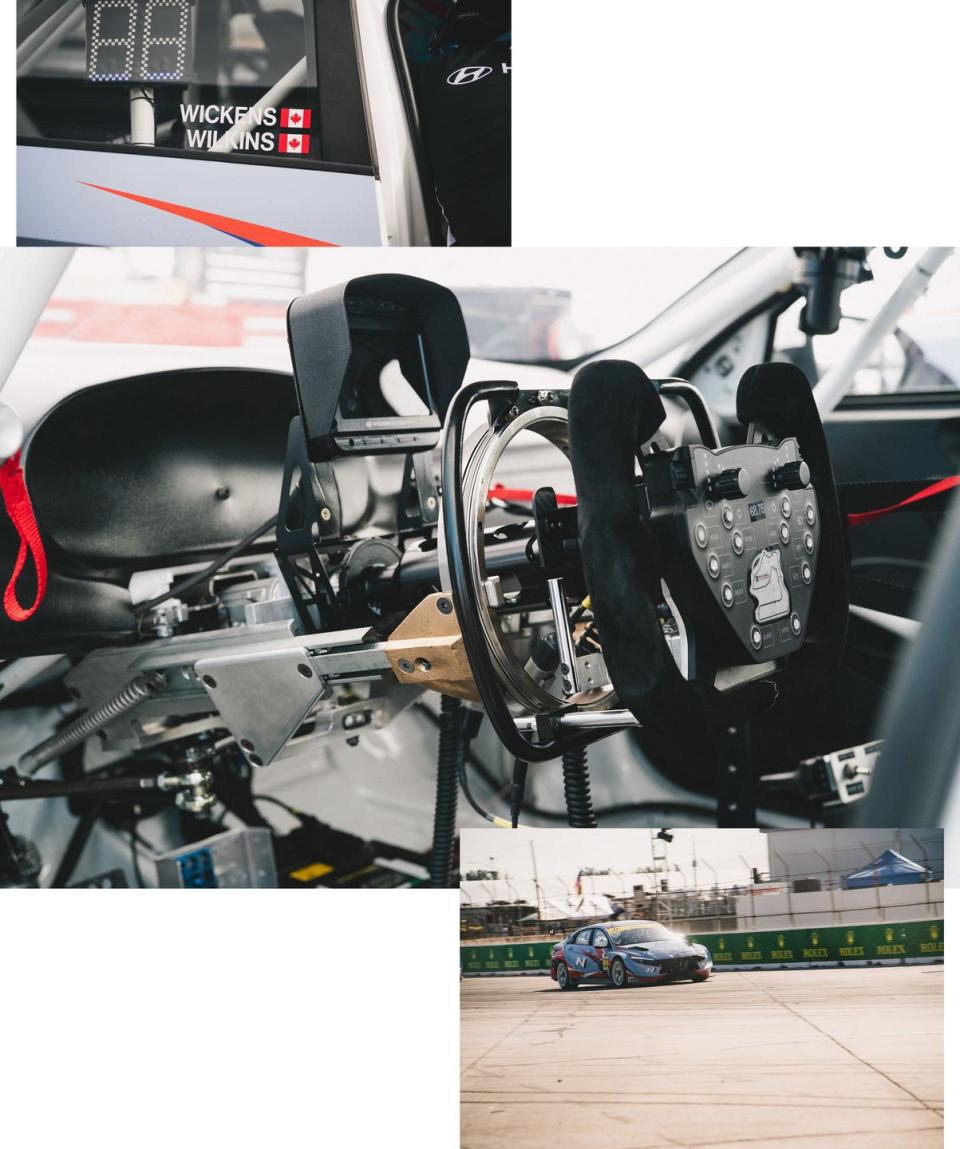
"And it seemed like that point really spiraled my season. Because I was like, ‘Oh, I'm just going to put it behind me and try harder.’ And then the next race we had an unfortunate circumstance where I think I had a mechanical retirement or something. And then like, okay, well now I've had two shitty races. So now we really got to pick it up. And then I started trying harder and then I started spending more time in engineering, working too hard to get back to where I felt like I could. And it just kept going worse and kept going worse and I kept trying harder and getting more and more frustrated. And then finally, Toto Wolff and Mercedes asked if I'd be willing to see a sports psychologist, and I said, 'Yes, please. I would love to.' Because clearly I'm doing something wrong."
For two weeks, he stayed in Vienna, working with a sports psychologist who skied for the Austrian national team, and it completely turned things around. Wickens learned to set lower expectations for himself, and in 2016, he fought for the title and took dominant wins at Zandvoort and Moscow. He also credits the work he did with the skier for helping him make such a strong recovery. "I was so grateful that I had worked with a sports psychologist prior to my accident because when I had my accident, [waking up from] my coma and finally coming to my senses, I knew what I had to do. And that was to try to limit any expectations. I treated it no different than how I approached a race. My work ethic was intense."
What's funny about all this is that Wickens doesn't need to be driving. He always retained a relationship with his IndyCar team and works with them as a sort of a driver coach. It's a job he thoroughly enjoys, but it doesn't bring him the ultimate satisfaction. "The thing I was struggling with is when you experience the ecstasy of winning a race as a driver . . . I got my first IndyCar win through Patricio O'Ward in Texas in 2021, and it was exciting for, like, two minutes," Wickens says. "And then it was just like, 'Okay, it's done.' Whereas a driver, that rush just carries and carries and carries and carries." The experience validated something he'd felt for a long time—he needed to be back in the driver's seat. "It was never questioned," he says. "I definitely questioned if it would happen, but I never questioned what I wanted to do."
Herta believes that this is only a beginning for Wickens, that the fact that he's been able to get even to this point shows there's so much more to come. "Anybody can imagine what he had to go through and imagine there was days you wouldn't wish on your greatest enemy," he says, "but he's challenged all of those things and, I think, defied expectations every step of the way, which is the mentality that's got him back to this point, back in a race car, and it's the mentality that makes me believe that this is far from the end of the journey, this is very much the beginning, and that he will accomplish many great things still in racing. I really believe that."
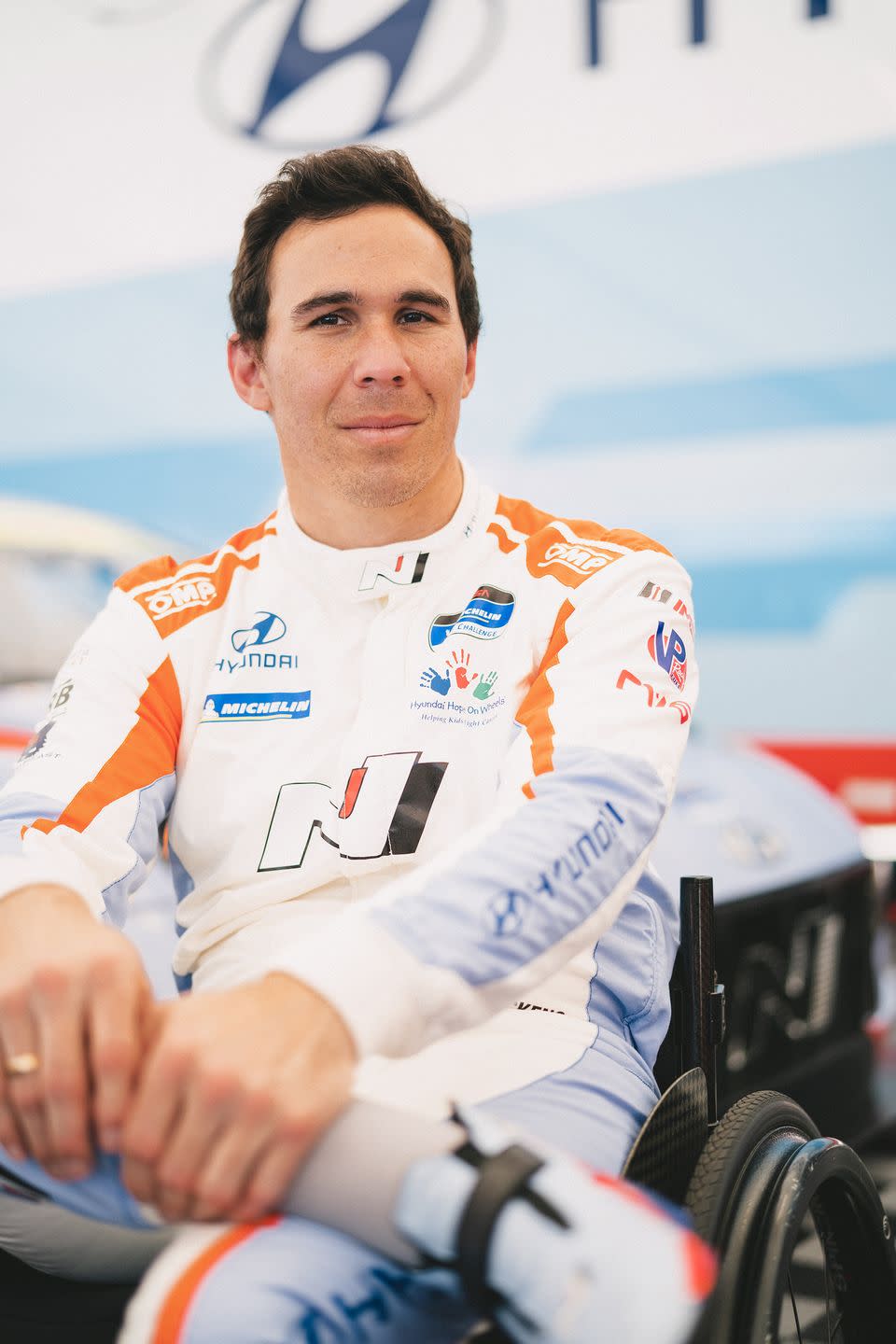
Getting there will require more people like Herta, and partners like Hyundai, willing to spend the money to develop a means for Wickens to drive their cars. In an already cost-intensive sport, finding that extra money is challenging. So in the meantime, Wickens wants and needs to be winning races and challenging for the title.
Since we spoke in Sebring, Wickens and teammate Wilkins got their victory at Watkins Glen and followed it up a week later at Mosport. It becomes clear that there's no question about whether Wickens deserves to be in a top-tier series—it's just a question of who will give him the opportunity.

You Might Also Like

 Yahoo Autos
Yahoo Autos 